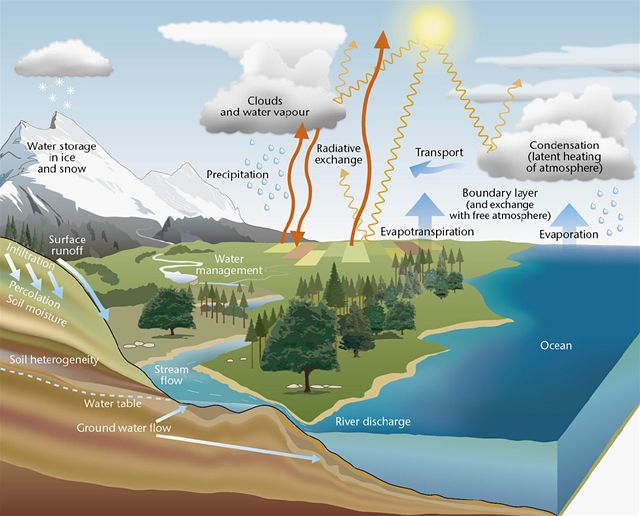Water - Where does our drinking water come from?
Where does our drinking water come from?
Water moves in a cycle from the earth to the air and back to the earth again in a process known as the water cycle: While on the earth, water for drinking comes from two sources:

- Groundwater from underground aquifers
- Surface water from streams, rivers or lakes
Groundwater is pumped to the earth's surface from wells. This water usually requires little treatment before drinking because it has already been filtered through sand and rock as it settles into the earth. Surface water requires filtration to remove any silt, sand or organic matter collected by the water as it moved from one area to another. Chemicals are added to speed up the process that nature uses to clean water.
All water in Ireland is either piped in from a local water supply or comes from an underground well. All of the water delivered to our homes is drinkable (potable) - even the water we use to flush our toilets and wash our clothes. Irish Water is responsible for water quality in your home, lakes, rivers and any other water bodies in the area. As water usage goes unchecked, there are more demands put on water treatment systems, as well as sources for municipal water supplies. By reducing the demand for water in our homes, the costs for water treatment will be less and there will be fewer threats to the natural water sources (lakes, rivers and underground aquifers) in our environment. Some households get their water from wells. Usually, these households are sited too far from the public water supply and so need to source their water independently. The less strain we put on the groundwater sources will result in less pollution and higher water-quality.
Further and most current information on water quality in Ireland can be found in the EPA Annual Drinking Water Reports.